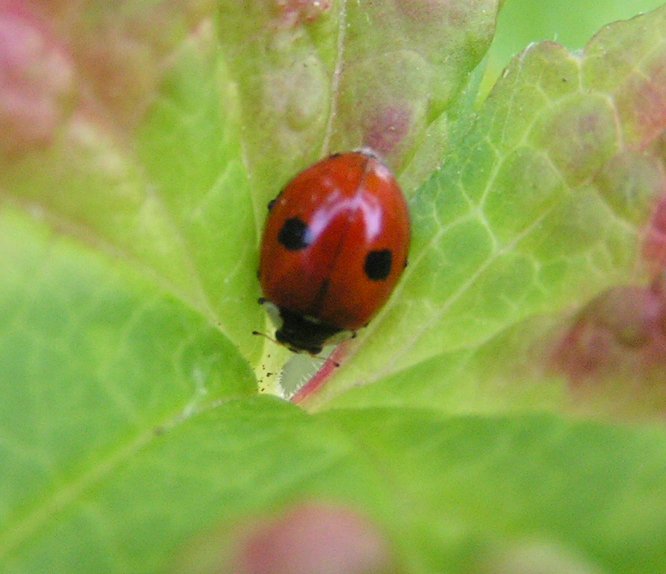|
Two-spotted Lady Beetle (Adalia bipunctata) - Wiki
| 제목: | Two-spotted Lady Beetle (Adalia bipunctata) - Wiki
| |

| 해상도: 666x574
파일크기: 53882 Bytes
등록시간: 2007:09:03 10:43:44
|
Two-spotted lady beetle
From Wikipedia, the free encyclopedia
[Photo] Two-spotted Ladybird (Adalia bipunctata). Date: May 15, 2005, Author: adrian.benko http://commons.wikimedia.org/wiki/User:Adrian.benko
The two-spotted lady beetle (Adalia bipunctata) is a carnivorous beetle of the family Coccinellidae and is very common in western Europe. It is used as a biological control agent against aphids, e.g. in greenhouses.
The most familiar form of the two-spot ladybird beetle is the red one with the two black or brown spots. However, there also exists a black form with four or six red parts on it. In addition, there are intermediate forms, but they occur only rarely in nature.
The two-spotted lady beetle's life cycle starts with eggs that are usually laid in clutches. The larvae hatches from the egg by biting a hole in it. The larvae look very different from the adults: they have elongated, grey, soft bodies with six legs but no wings. They are cannibalistic. Larvae go through four larval stages: by eating they grow and at some point they shed their old skin and appear in a new one in which they can grow more. The last larval stage is approximately the size of an adult beetle. Once it has eaten enough, the larvae attach themselves to a substrate and moult into a pupa. Inside the pupa, the adult develops. Finally the adult encloses from the pupa.
In some populations, the majority of the beetles are female. In these populations, 80-90% of the offspring of a females are female. The cause of this anomaly is the presence of a symbiotic bacteria living within the gametic cells of the female lady beetles. The bacteria is too large to live in the male gametes (sperm), so the bacteria can be transmitted to the next generation only through female gametes. When it ends up in a male, it will die when the male dies. Therefore, it kills most of the male embryos in the newly-laid eggs. These dead embryos then serve as food for their sisters when they emerge from their eggs. This trait is associated with a variety of different bacteria (Wolbachia, Rickettsia, Spiroplasma), which are present in between 0 and 20% of females, depending on locality.
The two spot ladybird also carries a sexually transmitted infection in Central and Eastern Europe. The infection is an ectoparasitic mite that transfers between male and female (and female and male) during copulation. The infection sterilizes female two spot ladybirds, and at some points of the year, up to 90% of adult 2-spots become infected.
Retrieved from "http://en.wikipedia.org/wiki/Two-spotted_lady_beetle"
| The text in this page is based on the copyrighted Wikipedia article shown in above URL. It is used under the GNU Free Documentation License. You may redistribute it, verbatim or modified, providing that you comply with the terms of the GFDL. |
|
^o^
동물그림창고 똑똑전화 누리집
^o^
|
|